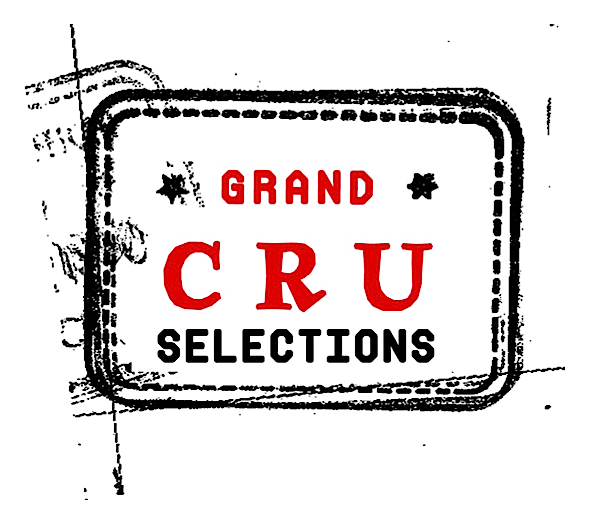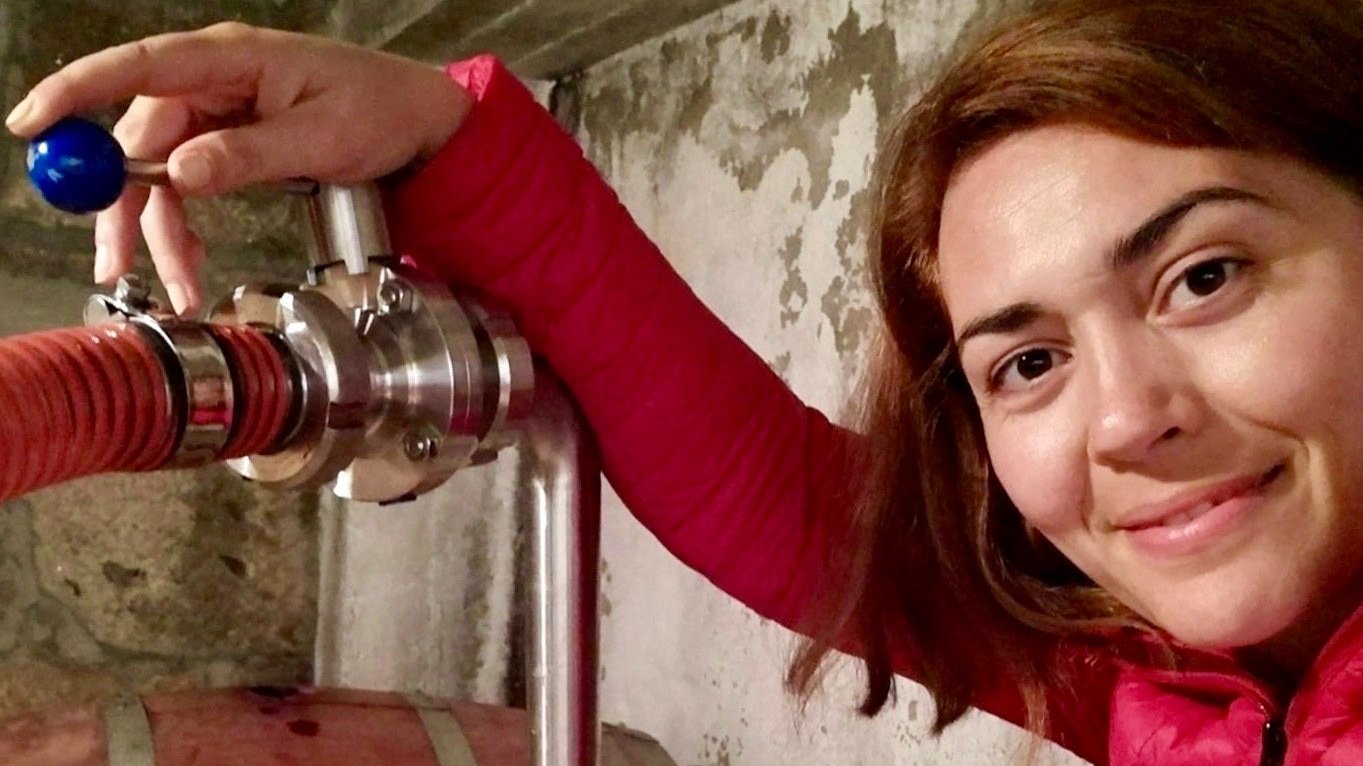Muxagat
Douro Valley, Portugal
Susana Lopes
As Grand Cru begins to understand what is awakening in Portugal’s pulsing wine scene, it is reassuring to have some traditional markers to realize a point of origin. Among our growers so far, the vines and century-old barn of Muxagat soundly anchor just such a post. With a horizon line of Spain’s western edge, at the beginning of the Duoro Superior, tradition lives and breathes out of the cut granite lagares, into balanced blends of 100% indigenous grapes. Susana Lopes, as the respectful 2nd generation, relies on this heritage to speak for itself, and with quite compelling results. One could say there is no need to change a thing. At the same time, however, Susana is not entirely satisfied resting on an old foundation. Not looking to risk anything per se (and certainly with very gradual intention), there is glimmering-eyed imagination at play.
With the help of her dear friend Luis Seabra, an exploration into the personalities of singular varietals has begun. Single parcels are being cordoned off for unique ferments. A concrete egg or two have arrived at the cellar. The size and shape of the élévage may be in experimentation mode. Susana is not one to shout this change down the valley (she is incredibly humble!) but there is an optimism percolating within the cold-granite walls here. From here, the high-corner of Meda, one can imagine this place as the wellspring of tradition trickling inspiration all the way to the Atlantic. For GCS, it is without a doubt, a significant and stable point of departure as well.
We were introduced to Susana quite recently, by way of Jeff Davis. Muxagat was his first relation as he built his collection of fine wine growers. We easily understand why. And we are thrilled to include her wines as we begin to share Portugal in GCS style.
-
As to the name itself, Muxagat means "owl and cat" in Portuguese; it is also , probably more relevantly, the name of a small village in the Douro Superior wine region, located 2 km from the small town of Vila Nova de Foz Coa.
Muxagat as a winery was first owned and operated by Mateus Nicolau de Almeida along with Eduardo Lopes. Mateus led with the intention to make local-varietal wines, expressed as “wines people would make for themselves”. Once part of a larger company that grew and sold grapes, Muxagat is now 80Ha of vines, where only the best parcels are used for the domaine wines. The land expands beyond with olive orchards and eucalyptus trees surrounding the vines in a full 300 ha of natural wildlife.
-
Located at the high-elevation E/W border of Spain (450-500M ASL), the cascading ridges and slopes dwell where the exposure is raw, broken and unprotected by the cold winds and direct heat of the sun. Granites of various color-tones clash with schist, feldspar and quartz underfoot, held together by a thin coating of arid topsoils. In accordance with this rugged landscape, with impressive diurnal swings, yields are naturally low. The plots, populated with only indigenous varietals, are interplanted, as is the tradition to ensure enough usable fruit when an off-weather season might limit full production.
-
Under the watchful guidance of Susana, viticulture is now focused on long-term sustainability, incorporating organic measures to preserve the unique personalities of the indigenous varietals. The vines range in age between 10-40 yrs (some of the whites being the elders here), but replanting seems to focus more on single varietal parcels (massale), which has created in effect, 2 presentations of the estate : Wines as traditional blends and as singular expressions of each unique varietal.
-
The winery is housed not too far down the road, in a century-old concrete barn, atop a cellar lined with glittery granite blocks. In one section, under the clay tiling, lies a few impressive concrete vats. Nearby sits a few sizable granite lagares, with vessels of inox and old oak (even a concrete egg) wedged where they may fit. It is evident that the wines sleep here through the cold winters and are carefully nursed under the protection of thick rock as summer heats up.
Susanna shares the cellar responsibilities with the oenologist Ana Sofia Silva. They are assisted in conversation with Luis Seabra as well. All is practiced with minimal intervention: Grapes are hand-harvested in small baskets, hand sorted. Wine is moved by gravity. only natural yeasts for fermentations. Some of the reds are foot-trodden in the old lagares, resulting in wines requiring a bit longer aging in barrel. That said, a current conversation seems to be questioning the traditional love for powerful extraction and densely tannic wines.
Wines
Branco
Grapes: 60% Rabigato, 30% Arinto and 10% Gouveio
Vinification: The grapes are harvested by hand from a vineyard in Fonte Longa and arrive at the winery in 20kg boxes and cool for 12 hours. Grapes are hand sorted and pressed in vertical press with stems and the must is settled in underground stainless steel tanks. Fermentation is done with indigenous yeast only. Aging in used French oak barrels for 10 months on fine lees.
Age of vine: 18 years
Production: ~5,700 bottles annually
Ox Xistos Altos Branco
Grapes: 100% Rabigato
Vinification: Grapes are harvested by hand and before being crushed at the winery spend 12 hours cooling at 50-degrees. The next day they are pressed with vertical press. By gravity, the must goes into tanks for 12 hours before being transferred to cement egg. Fermentation is by indigenous yeast and the wine is aged in used French oak for 18 months.
Age of Vines: 19 years
Production: ~2,400 bottles annually
Tinto
Grapes: 60% Touriga Nacional, 30% Touriga Franca, and 10% Sousão
Vinification: The grapes of this wine come from three different pots in Fonte Longa and Muxagata and are harvested manually. Harvest is by hand with the grapes arriving at the winery in 20kg boxes. Sorting is by hand and grapes are pressed in a vertical press. Fermentation is done with indigenous yeast only and light foot stomping occurs for one week. The wine spends 14 months in 225 liter used French oak barrels before bottling.
Age of vine: 17 years
Production: ~10,000 bottles annually
Tinta Barroca
Grapes: 100% Tinta Barroca (easy going variety. tends to have high alcohol, unless it’s harvested early.)
Vinification: Grapes are harvested by hand, sorted manually at the winery, and go through a one month maceration in cement vat before pressing in vertical press. Fermentation is natural with indigenous yeasts. Wine ages in underground cement tanks on fine lees for nine months before bottling.
Age of vines: 17 years
Production: ~7,700 bottles annually


